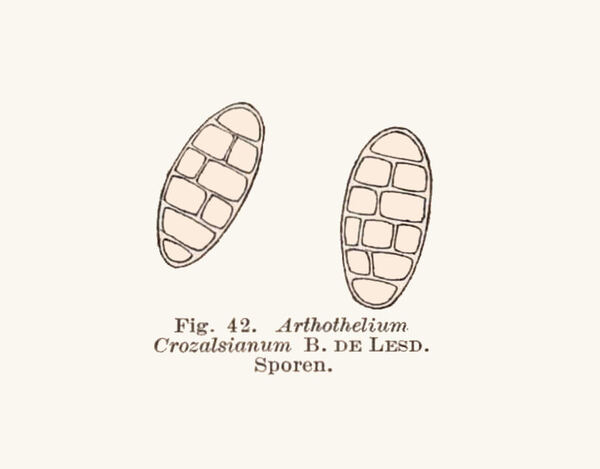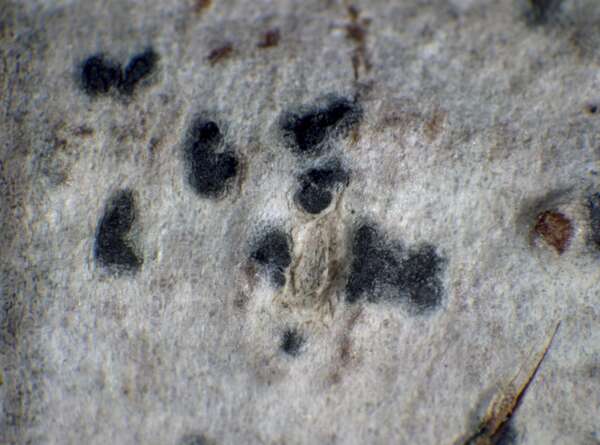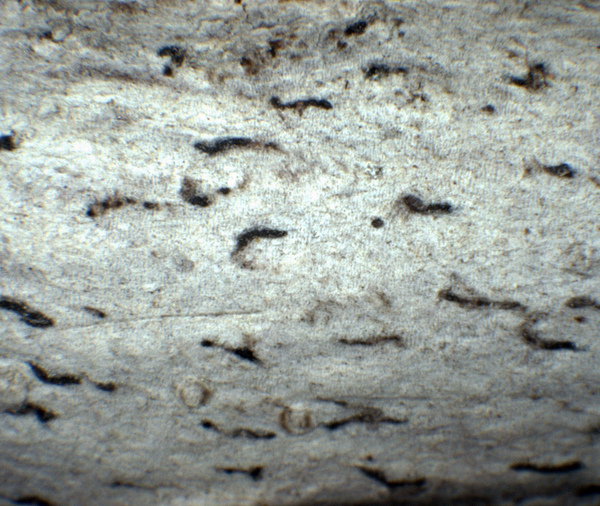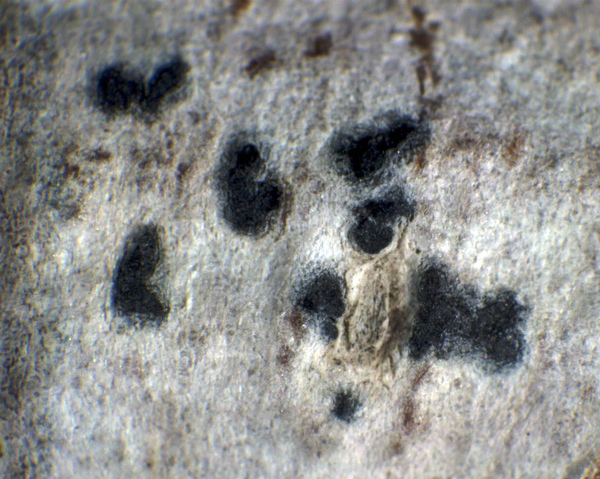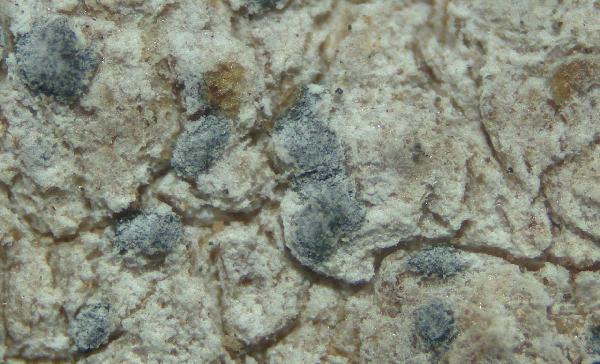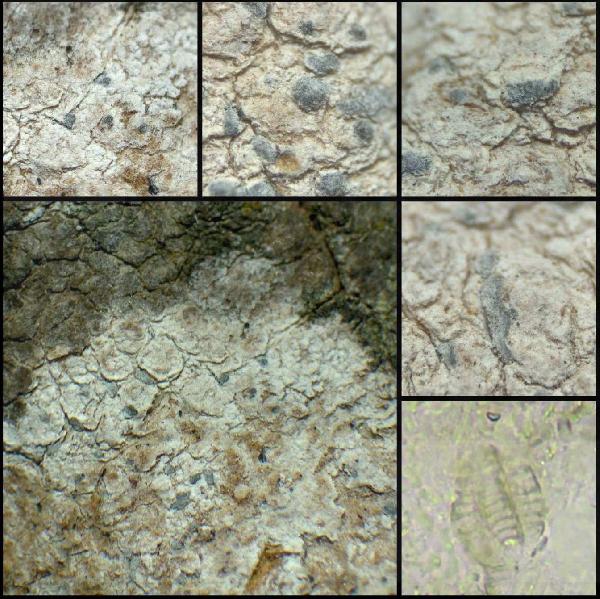Arthonia albopulverea Nyl.
Ann. Sci. Nat. Bot., ser. 3, 20: 319, 1853.
Synonyms: Arthonia crozalsiana B. de Lesd.; Arthothelium adriaticum Zahlbr.; Arthothelium burolletii B. de Lesd.; Arthothelium crozalsianum B. de Lesd.; Arthothelium xylographoides Müll. Arg.
Distribution: C - Tosc (Grube & Giralt 1996), Laz (Grube & Giralt 1996), Sar (Grube & Giralt 1996, Zedda 2002, Rizzi & al. 2011, Neuwirth 2018, Di Nuzzo & al. 2022). S - Camp (Garofalo & al. 2010), Pugl (Nimis & Tretiach 1999), Cal (Puntillo 1996), Si (Ottonello & al. 1994, Grube & Giralt 1996, Grillo & al. 2002, Grillo & Caniglia 2004, Cataldo & Minissale 2015).
Description: Thallus crustose, not lichenized, very thin, usually continuous, white to pale grey, sometimes delimited by a very thin, dark grey to black prothalline line. Apothecia arthonioid, irregularly rounded (0.4-0.6 mm across) to weakly elongate and (0.5)1-2(-5) x 0.1-0.3 mm, simple to branched-stellate, slightly raised above thallus level, black and usually epruinose, rarely faintly white-pruinose. Proper exciple absent; epithecium olivaceous-brown to green-black, 10-15 μm high; hymenium colourless, 35-60 μm high, I+ blue rapidly turning blood-red, K/I+ blue; paraphysoids anastomosing, branched in upper part, 1-1.5 μm thick; hypothecium colourless to pale brown, (10-)20-40(-70) μm high. Asci 8-spored, broadly clavate, semi-fissitunicate, with a large apical dome and a distinct ocular chamber, the apex with a K/I+ blue ring-structure, Arthonia-type. Ascospores submuriform, with (3-)4-5(-6) transverse septa and (0-)1(-2) longitudinal septa in each of the tranverse segments, ellipsoid, persistently hyaline, without a distinct gelatinous sheath, (14-)15-18(-23) x 5.5-9 μm, the wall I-. Pycnidia frequent, more or less hemispherical. Conidia bacilliform, (4-)5-6-5 x c. 1.5 μm. Photobiont: absent. Spot tests: thallus K-, C-, KC-, P-, UV-. Chemistry: thallus without lichen substances.Note: a mild-temperate, non-lichenized species also known from western North America, mainly found near the coast, mostly on the smooth bark of Pinus in stands subject to humid maritime winds, but less bound to humid situations than A. beccariana.
Growth form: Fungus
Substrata: bark
Reproductive strategy: mainly sexual
Most common in areas with a humid-warm climate (e.g. most of Tyrrenian Italy)
Pioneer species
Commonnes-rarity: (info)
Alpine belt: absent
Subalpine belt: absent
Oromediterranean belt: absent
Montane belt: absent
Submediterranean belt: absent
Padanian area: absent
Humid submediterranean belt: extremely rare
Humid mediterranean belt: rare
Dry mediterranean belt: absent

Predictive model
Herbarium samples
Growth form: Fungus
Substrata: bark
Reproductive strategy: mainly sexual
Most common in areas with a humid-warm climate (e.g. most of Tyrrenian Italy)
Pioneer species
Commonnes-rarity: (info)
Alpine belt: absent
Subalpine belt: absent
Oromediterranean belt: absent
Montane belt: absent
Submediterranean belt: absent
Padanian area: absent
Humid submediterranean belt: extremely rare
Humid mediterranean belt: rare
Dry mediterranean belt: absent

Predictive model
| Herbarium samples |
 Index Fungorum
Index Fungorum
 GBIF
GBIF


